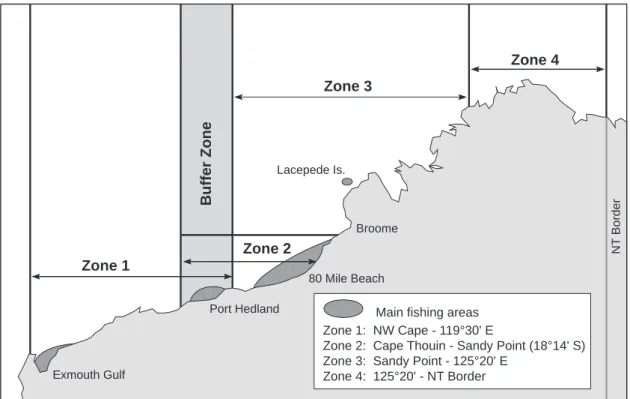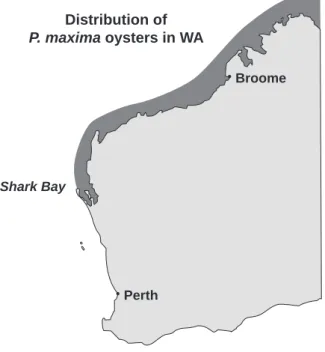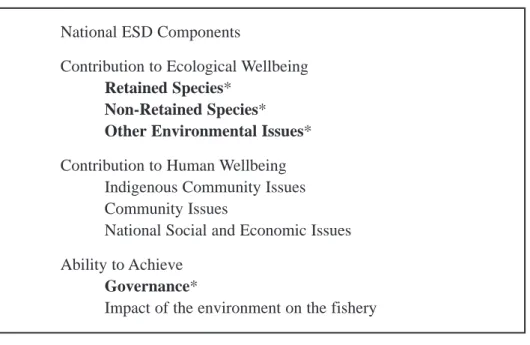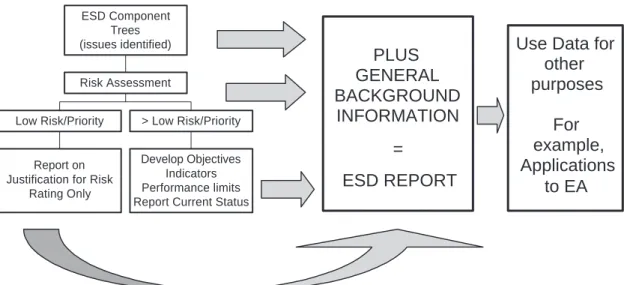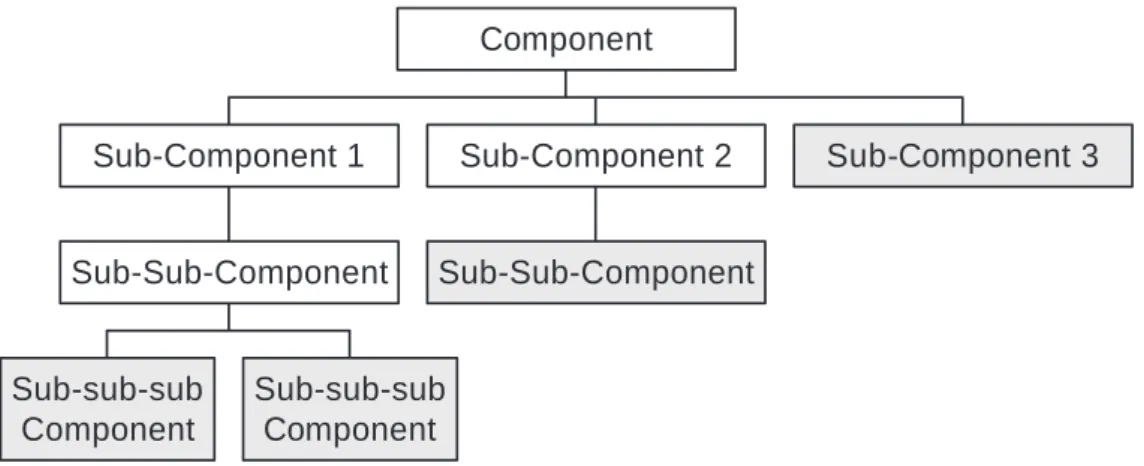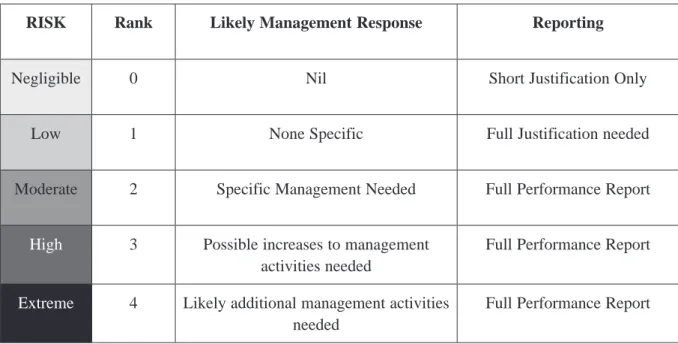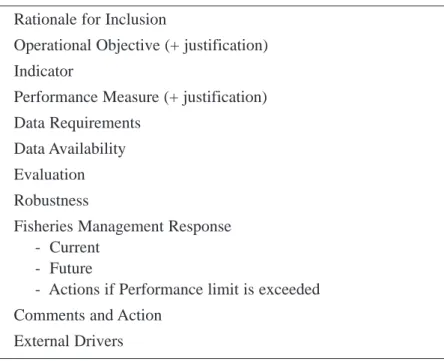Introduction
It covers how to report on performance for target species and the rest of the ecosystem. In the longer term, it will include explicit recognition of the role of social and economic aspects in the decision-making process of fisheries management (including resource allocation).
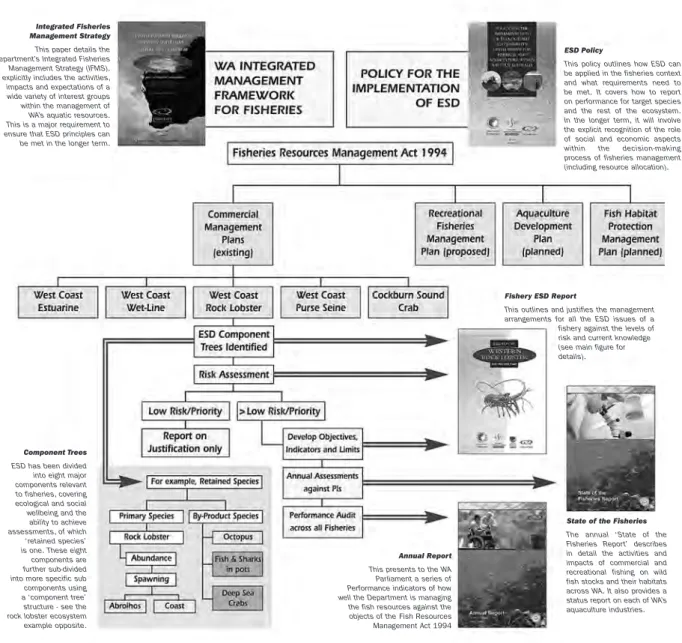
Overview
Background on the pearl oyster fishery
DESCRIPTION OF THE FISHERY
At the end of the dives, the collected pearl oysters are recovered and sorted. Target size shells are cleaned with a cleaver by scraping off encrusting organisms on the pearl shell.
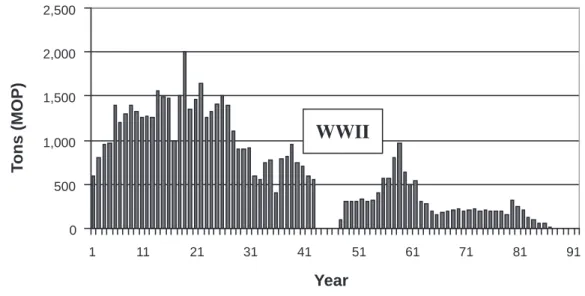
BIOLOGY OF SILVER LIPPED PEARL OYSTERS
If a suitable settlement is not found within a short period of time, the animals will transform and die. The animals have no additional ability to colonize new habitats or move to a more favorable position.
MAJOR ENVIRONMENTS
Physical Environment
Hydroids quickly grow up to one meter in height and are quickly covered with various organisms, some very colorful, so that the bottom actually resembles a garden. They all have in common that they are located on the bottom with rocks underneath and are composed of a wide variety of invertebrates.
Economic Environment
The dominant species on the potato bottom is a low, round, densely packed ascidian that lives attached to the bottom. The next dominant group are the sponges, with many different vase-shaped, basket-shaped sponges and massive sponges up to 0.5 m high, interspersed with smaller sponges measuring only a few centimeters.
Social Environment
While potato and garden beds dominate the fishing area, several other bed types are recognized by the industry, including collards, asparagus, etc. None of the habitats are in ecologically sensitive areas such as sea grasses, coral reefs or mangroves.
Outline of reporting process
SCOPE
OVERVIEW
An assessment of the performance for each of the issues of sufficient risk to require specific management actions was completed using a standard set of report headings where operational objectives, indicators and performance measures, management responses etc. were specified. An overview assessment of the fishery has been completed, including an action plan for activities that will need to be undertaken to enable acceptable levels of performance to continue or, where necessary, improve the performance of the fishery.
ISSUE IDENTIFICATION (component trees)
Stakeholders present during this meeting covered commercial industry, environmental groups, Environment Australia, Department of Conservation and Land Management, Department of Fisheries staff and a group of consultants (full list of participants in Appendix 1).
RISK ASSESSMENT/PRIORITISATION PROCESS
It is important to note that the risk assessment involves the completion of reports containing the completed justifications for the scores generated.
COMPONENT REPORTS
Finalization of these component reports was initiated at the initial stakeholder workshop in September 2001. Instead, the completed set of draft component reports was sent to all participants of the initial workshop and any issues/concerns they had were communicated directly.
APPLICATION TO MEET EPBCA REqUIREMENT
Current estimates are that less than 5-10% of pearl oyster stocks are even fished (see Figure 8). No formal evaluation of the management of the pearl oyster fishery has been carried out in relation to the general results listed above. The management of the pearl oyster fishery is based on an extensive consultation and communication process.
Mechanisms for industry input into pearl fishery management are well established and operating effectively. Current: To report annually to Parliament and the community on the status of fisheries. The provisions of the Pearling Act 1990, the General Pearling Regulations 1991 and the Ministerial Policy Guidelines (MPG) govern the Pearl Oyster (Pinctada maxima) Fishery.
A performance evaluation for the Pearl Oyster Fishery is conducted at least once a year and sometimes within the season. Because the shell of the pearl oysters is covered with fouling commensal organisms, including others. All six problems identified for the pearl oyster fishery were assessed as a NEGGIBLE risk.
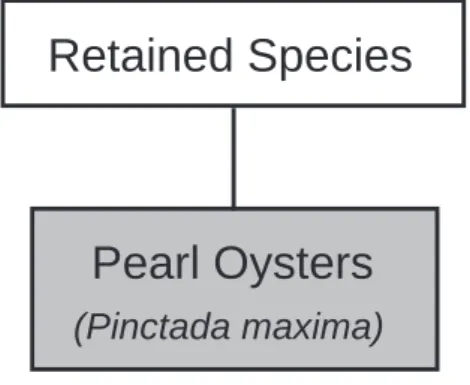
OVERVIEW TABLE
Performance reports
RETAINED SPECIES
Primary Species
- Silver Lipped (Gold Lipped) Pearl Oysters
- Genetic disruption to oyster populations
In Area 1 (south of the fishery) where recruitment is more sporadic and cyclones often adversely affect habitats, the Research Division has conducted dive surveys to determine the health and abundance of pearl oyster spawners (MOP) in the area. Historical catch and effort figures show an increase in the stock in the main pearl fishery hotspots since the early 1990s (Table 4). In 2000, previously unexploited areas in the middle fishing sectors are starting to show promise again (12% of the catch of Zone 1).
Catches from unexploited areas in the middle fishing sectors are again approaching more promising levels (12% of Area 1 catch in 2000). Grounds previously fished in the middle fishing sector provided 86% of the total catch of Area 1 in 2001.
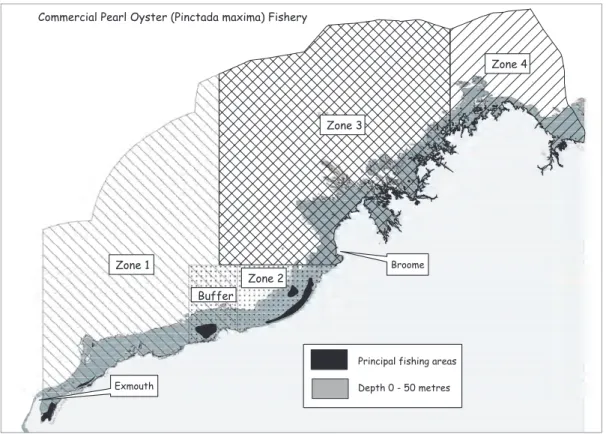
NON-RETAINED SPECIES
Piggy-back species
- Habitat for fouling or commensal species
Fouling organisms looking for a settling position free from the substrate are found on oyster shells and coral debris found on pearl soils. Even though invertebrates commonly foul pearl oysters, there is no indication that pearl oyster shells are a more preferred habitat for invertebrate settlement (Friedman5, pers. comm.). Of the species that do settle on the shell of pearl oysters, they most likely do not use the pearl oyster shell exclusively as a substratum.
Fishing practices and management of pearl oyster stocks ensure that large pearl oysters are not commercially fished. The possibility of having a "negligible" impact is considered "remote", as the management of pearl oyster stocks results in a high proportion of pearl oysters not affected by fishing.
GENERAL ENVIRONMENT
Impact of removing pearl oysters from the environment
ERA Risk Assessment: Impact of Oyster Consumption on Trophic Interactions (C0 L1 NEGLIGIBLE) Removal of pearl oysters could result in reduced removal of particles from the water column by removing a portion of the filter feeders from the system. In the wild, pearl oysters represent only a small proportion of the filter feeders present, and removal of only a small portion of this stock would leave no measurable change in the levels of primary productivity and other particles in the water column. The removal of pearl oysters is also not expected to affect predation, as divers only target a small volume of oysters for the production of round pearls.
ERA Risk Assessment: Environmental Impact of Discarded Shells (C0 L1 NEGLIGIBLE) Oysters are returned to the substrate near where they were harvested. Pearl oysters are kept in mesh panels and placed on the seabed for a few weeks before seeding.
GOVERNANCE
- Department of fisheries – management
- Management effectiveness (outcomes)
- Management arrangements
- Compliance
- Allocation among users
- Department of fisheries – legal arrangements
- OCS arrangements
- Department of fisheries – consultation
- Consultation
- Department of fisheries – reporting
- Assessments and reviews
However, the ministerial guidelines for pearl oyster fisheries outline the general results to be achieved for the fishery and contain the basic rules for managing the pearl oyster fishery. Level of understanding of rules for the operation of the fishery by licensees and the wider fishing community. ED complies with the consultation requirements of the Pearling Act and the Ministerial Policy Guidelines.
It is important that the results of the fisheries management processes administered by the Pearl Oyster Fisheries Division are available for external review. Annual reporting on fishing performance against agreed targets as part of the Fisheries Status Report.
Appendices
Attendees list
Acronyms
The ESD component reports (see Chapter 5) contain the objectives, indicators and performance measures for measuring the effectiveness of the management arrangements for the pearl oyster fishery. Ensure periodic evaluation of the performance of fisheries management arrangements and management strategies, objectives and criteria. The ESD Component Reports contain comprehensive performance evaluations of the pearl oyster fishery based on the framework described in the Fisheries ESD Policy (Fletcher, 2002).
Details of the interactions are provided in the non-retained species section of the report. The research and data collected and analyzed for the pearl oyster fishery aims to ensure that the recruitment of the pearl oyster for each zone is either maintained or increased. In addition, the size class of the pearl oysters caught is also assessed within each zone.
A formal risk assessment (see section 5.3 for details) has been produced for each of the identified issues relevant to the pearl oyster fishery (see component tree for issues).
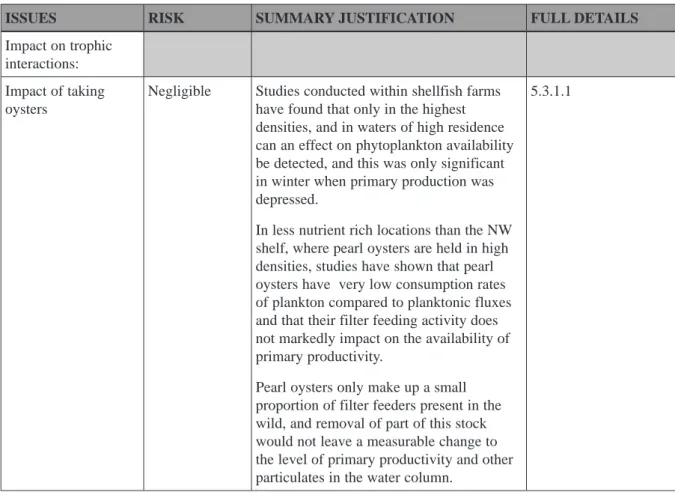
Research summary table
Details of consequence table
By-product/other non-conservation: Area of fishing is negligible compared to where the relevant stock of these species is located (< 1%). Small target/non-detained: May be detectable, but little impact on population size, but none on their dynamics. By-product/other not retained: catches in this fishery are small (< 10% of total) compared to total catches by all fisheries and these species are explicitly included elsewhere.
Byproduct: The relative area or sensitivity to capture is suspected to be less than 50% and the species has no vulnerable life history traits. By-product/Other not preserved: No information is available on the relative area or susceptibility to capture or on the vulnerability of the life history traits of this species.
Non-pinctada maxima species to be listed for exemption
Due to the low product value, they are not widely cultivated, but several licensees in Shark Bay use them, approx. This species has a wide distribution and in WA it can occur as far south as Albany. There is 1 license and currently 2 licensees are seeking a variation to their existing license to include this species.
It is generally found north of the Abrolhos Islands and is more common in the warmer northern tropics.
Materials supplied to Environement Australlia against their
Be strategic, containing goals and performance criteria against which the effectiveness of the management arrangements will be measured. The area where fishing is only a relatively small percentage of the total distribution of pearl oysters in this region (< 10%). Fishing for pearl oysters currently occurs in less than 10% of the species' range within this region.
A significant number of pearl shells are known to exist in many of the areas currently not targeted by fisheries. The impacts of the fishery were identified as having a negligible risk to these "piggy-backs".
Approval and recommendations from EA
I believe that fisheries are managed to minimize their impact on ecosystem structure, productivity, function and biodiversity. The limited harvest combined with the highly selective collection method ensures that impacts on bycatch and protected species are negligible and there is no significant impact on ecosystem structure, productivity, function and biodiversity. I understand that they have accepted a number of recommended actions focused on ensuring the continuation of good management practice, which will be implemented before the next Commonwealth Review of Fisheries.
DFWA to maintain an effective fisheries research and monitoring program to validate catch data, improve understanding of stock status and develop biological performance measures. Should a fishery be initiated in Zone 4, DFWA must include Zone 4 in a fishery assessment program to ensure that a reliable biological assessment of stock status, including benchmarks, is established and that the fishery is managed in an ecologically sustainable manner.
